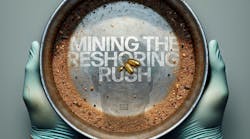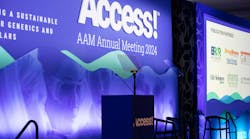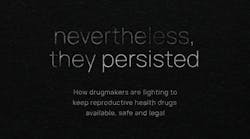Before America got desperate enough to binge watch “Tiger King,” the TV industry went through a bit of a drug cartel phase. Specifically, a Latin American drug cartel phase.
From “Narcos” to “Breaking Bad” to “Sicario,” the baddest of the bad guys were always streaming in from our southern borders with AK-47s blazing, leaving a trail of bikini-clad women, cocaine and the occasional severed head behind them.
Viewers seemingly had an insatiable appetite for this narrative, despite it being played out and riddled with stereotypes.
So naturally, when headlines began calling out the “largest cartel in the history of the United States,” people kept reading.
Perhaps they were disappointed when the story was about khaki-clad pharma execs on the golf course, conspiring to fix the price of a generic Athlete’s foot cream.
And yet, the scandal just kept getting worse. Just like a single shot fired in a cartel film often spirals into a street strewn with dead bodies, things got out of hand quickly and casualties were heavy.
As you will read in this month’s cover story, what started as just a handful of antitrust allegations back in 2016 unfolded into a massive criminal price-fixing conspiracy involving close to 30 generic drugmakers and at least 300 generic drugs. Years later, numerous companies and individual executives have pled guilty, and some have even snitched on their peers in exchange for better deals. State and federal litigation is still ongoing and it’s not uncommon to see news of another civil or criminal settlement in the headlines. Just this month, three more generic drug manufacturers agreed to shell out $447 million to settle federal allegations of pricing violations.
What’s most shocking is that this is not the enemy we expected. Frequently referred to as the “underdogs” or “unsung heroes,” of the pharma industry, generics have long been the counterweight to rising drug prices in the U.S.
In short, generics were helping America win the war on drug prices.
And they still are. An impressive 92% of generic prescriptions are filled at $20 or less and the average generic copay is under $7. In 2019, generic drugs saved America’s patients $313 billion — including $96.1 billion in Medicare and $48.5 billion in Medicaid savings.
The TV industry has done a disservice to Latino characters by constantly portraying them as drug lords in the same tired trope. While the recent litigation in the generics space is compelling in its scandalous details, it would be unfortunate if it resulted in typecasting an entire industry based on the actions of some.
When all the legal dust settles, those who broke the law will likely pay the price to the tune of millions of dollars, as they should. Hopefully, next season will feature less drama, more compliance and star an industry more focused on doing what it does best: getting affordable, life-saving drugs into the hands of patients.




